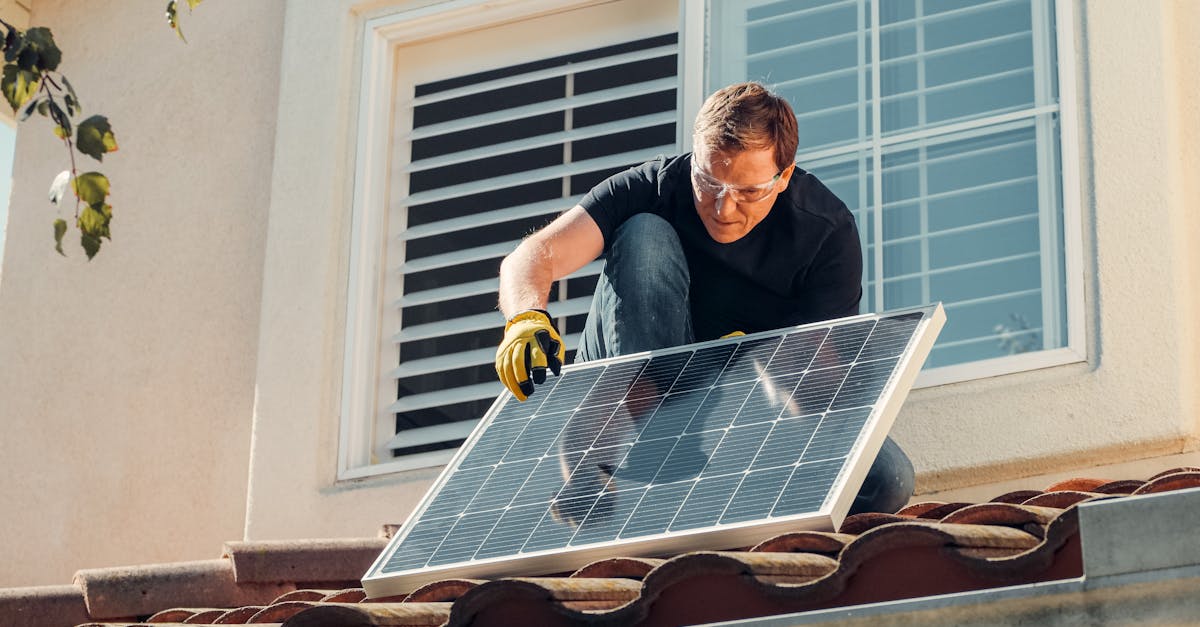What maintenance is required for a roof?

Table Of Contents
Removing Overhanging Branches
Overhanging branches can pose significant risks to a roof's integrity. During strong winds or storms, these branches may snap and fall, potentially causing damage to shingles, gutters, and even the roof structure itself. Regularly inspecting the area around your home helps identify branches that may be too close for comfort. If any are found, trimming them back can prevent future damage and costly repairs.
In addition to physical damage, overhanging branches can contribute to issues like mold or mildew. When leaves and debris accumulate on the roof, they create a moist environment ideal for growth. Ensuring adequate clearance from trees not only protects the roof but also maintains a healthier environment for the home. A well-maintained landscape around the roof enhances both safety and longevity.
Reducing Risk of Roof Damage
Overhanging branches can pose a significant threat to the integrity of a roof. During storms or strong winds, these branches may break off and strike the roofing material, leading to potential punctures or structural damage. Additionally, constant contact between branches and the roof creates wear due to debris accumulation, which can trap moisture and promote the growth of mold and mildew. Regularly trimming these branches back ensures that the roof remains well-protected from both natural elements and falling debris.
Another aspect to consider is the accumulation of leaves and other organic matter in gutters and on the roof surface. This buildup can lead to blockages, preventing proper water drainage. When water does not drain adequately, it can back up under shingles and cause leaks over time. By maintaining clean gutters and clearing the roof of any debris, homeowners can significantly reduce the risk of moisture-related problems, helping to extend the lifespan of their roofing system.
Checking Attic Ventilation
Proper attic ventilation plays a critical role in maintaining a healthy roof and overall home environment. It allows for the circulation of fresh air, preventing the buildup of moisture and heat in the attic space. This is particularly important during warmer months when stagnant air can cause excessive heat buildup, potentially damaging roofing materials and impacting the longevity of the roof.
In addition to moisture control, effective ventilation can help reduce energy costs. By regulating attic temperatures, homeowners can minimize the strain on air conditioning systems during the summer. Furthermore, balanced ventilation can mitigate ice dam formation in winter, allowing snow to melt evenly and draining properly without causing damage to the roof structure. Ensuring adequate airflow through soffit and ridge vents can contribute significantly to the roof’s overall performance.
Promoting Energy Efficiency
Proper attic ventilation plays a crucial role in maintaining the energy efficiency of a home. Adequate airflow helps regulate temperatures, preventing heat buildup during warmer months. This reduces the reliance on air conditioning systems, leading to lower energy bills. Additionally, proper ventilation aids in moisture control, which protects insulation and prevents mold growth, further contributing to an energy-efficient environment.
Insulation quality also directly affects a roof's energy performance. Insufficient insulation allows heat to escape in the winter and enter during summer, straining heating and cooling systems. Upgrading insulation can enhance the overall energy efficiency of a roof, ensuring that homes remain comfortable year-round. Homeowners should regularly assess both ventilation and insulation to maximize their roof's performance and energy savings.
Assessing Roof Drainage
Proper roof drainage is essential to maintain the integrity of a building. Water accumulation can lead to leaks, structural damage, and the growth of mold. Regularly inspecting gutters and downspouts ensures they are free from debris. Clogged drainage systems can cause water to overflow, potentially damaging landscaping or the building’s foundation.
Slopes on roofs play a critical role in effective drainage. A well-designed slope directs water toward the gutters, minimizing the risk of standing water. Homeowners should also monitor the flow of water during rainstorms to identify any pooling areas. Addressing drainage issues promptly helps prolong the lifespan of the roofing material and enhances overall building resilience.
Importance for Preventing Ponding
Proper roof drainage is essential to prevent water accumulation, which can lead to significant structural issues. When water collects on the roof, it can seep into materials, weakening them over time. This not only poses a risk of leaks but can also contribute to the growth of mold and mildew, potentially impacting indoor air quality and health.
Regular inspections of gutters and downspouts are vital to ensure they are free of debris and functioning efficiently. Blocked drainage systems can exacerbate water pooling, increasing the pressure on roofing materials. By maintaining clear pathways for water runoff, homeowners can safeguard their roofs and mitigate the risk of damage, ultimately prolonging the life of the entire roofing system.
FAQS
How often should I inspect my roof for maintenance?
It is recommended to inspect your roof at least twice a year, ideally in the spring and fall, to catch any potential issues early.
What are the signs of roof damage that I should look for?
Look for missing or damaged shingles, leaks, sagging areas, and excess granules in gutters. Interior signs include water stains on ceilings or walls.
Why is attic ventilation important for roof maintenance?
Proper attic ventilation helps regulate temperature and moisture levels, which can prevent ice dams, mold growth, and prolong the lifespan of your roof.
How can I improve roof drainage?
Ensure gutters and downspouts are clean and free of debris, check for proper sloping on the roof, and consider installing additional drainage solutions if necessary.
What role do overhanging branches play in roof maintenance?
Overhanging branches can cause damage by scraping the roof surface, blocking sunlight, and increasing the risk of falling debris during storms. Trimming them back can help protect your roof.
Related Links
What maintenance is required for a roof?A Complete Guide to Roof Maintenance